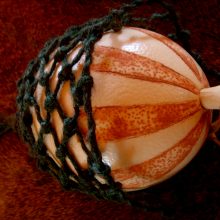A WARM WELCOME TO ALL SANTA CRUZ COUNTY, AZ EDUCATORS GRADES 4 -12!

Why is the world class biodiversity that we have in Santa Cruz County so famous? What are the Sky Islands? How can we collectively inspire our students to learn about and help protect the local species that help support a healthy environment and thriving economy?
All Santa Cruz County Educators Grades 4 – 12 are invited for an advanced workshop about the stunning biodiversity of the Sky Islands region. Via a combination of slide shows, nature walks and hands-on activities, educators will be given the tools, methods, and techniques required to form effective school-based Sky Islands Conservation programs and learn effective ways to impart critical environmental concepts to the students. It is imperative to educate future generations about the amazing wildlife and native plants that we are fortunate to have in the Madrean Archipelago – including our extraordinary natural heritage in Santa Cruz County!
Join this Professional Development opportunity at – NO COST TO YOU – and receive a Sky Islands Biodiversity Certificate upon Completion.
WHEN: Monday, February 20, 2023
WHERE: Raven’s Nest Nature Sanctuary by Patagonia Lake
TIME: 9:00am – 4:00pm
TO REGISTER: Email – [email protected]
REGISTRATION DEADLINE: Friday, February 17, 2023




Since 1987, Naturalist, Wildlife Biologist, Ethnobotanist, & Wilderness Survival Instructor Vincent Pinto has taught countless other educators how to effectively engage students of all ages with their natural environment, inspiring them to become the next generation of conservationists via Ravens-Way Wild Journeys LLC. Passionate about the urgent need to help protect the Sky Islands unique biodiversity, Vincent has been offering Sky Islands education and conservation programs for over 35 years.
As a Patagonia Area Resource Alliance – PARA- Board Member, Vincent felt compelled to help protect local flora and fauna by coming up with the concept of his new ground-breaking film:
Biodiversity in the Heart of the Sky Islands
Vincent serves as the Screenwriter, Narrator, and on-screen Host to promote the urgent need for Sky Islands conservation efforts with a focus within Santa Cruz County – in the Patagonia Mountains and Sonoita Creek.
This Nature documentary explores why we are so fortunate to enjoy such amazing biodiversity in the Madrean Archipelago. In the heart of this region the Patagonia Mountains and Sonoita Creek support a myriad of mammals, birds, reptiles, amphibians, invertebrates, as well as a dazzling array of native plants. The film delves deeply into the lives of their intriguing species. In addition to exploring the unique biodiversity and beauty that lies within Santa Cruz County, learn about the looming threats to the ecological integrity of the Patagonia Mountains and Sonoita Creek.
Vincent approaches the content of the film with a broad view – giving prominence to both rare and common species, temperate and tropical ones, the flashy and the cryptic… The result is a kaleidoscopic view of our region’s much vaunted, yet highly imperiled biodiversity.
All of the proceeds from the film will benefit PARA to support its ongoing conservation efforts in the Patagonia Mountains & Sonoita Creek.

WHAT ARE THE SKY ISLANDS?
Arizona’s renowned Sky Islands – a region hosting more biodiversity than any comparable area in the U.S. Southeast Arizona hosts soaring mountain ranges carpeted with forests – each isolated by surrounding foreboding deserts and parched grasslands. These ranges are thus virtual habitat islands, lending the region its most famous name – “The Sky Islands”. Here we enjoy a world-class biodiversity hotspot!
Six different biological provinces overlap in this region: Rocky Mountains, Sierra Madre, Sonoran Desert, Chihuahuan Desert, Great Plains, and Neo-tropics. These key Sky Islands conservation zones, have a very rich ecology and inherent beauty.
OUR NATURE SCIENCE SCHOOL CONTINUES TO WELCOME ALL EDUCATORS

Our Nature and Science School is designed to immerse your students in a hands-on Nature experience, incorporating your school’s curriculum and the specific needs of your group. We’ll work with you to custom-make a program that will be an unforgettable Nature Adventure and learning experience for your students. We aim to inspire children and young men and women to not only see the inherent values in Nature, but also to participate in the the natural world.

From 4th grade through all levels of College, we are able to adapt most RAVENS-WAY WILD JOURNEYS LLC offerings to the age and learning abilities of your students. Safety is always stressed in all of our Nature and Science School offerings – from both physical and emotional perspectives. While we focus deeply on learning, the well-being of visiting students is always foremost in our minds! Learning while having fun at Raven’s Nest Nature Sanctuary is a priority. As hosts and instructors we strive to make each individual student feel that this is their home away from home!

Best of all, is the experience at RAVEN’S NEST our 42-acre Nature Sanctuary near Patagonia Lake and Sonoita Creek State Natural Area. Here your students will enjoy private access to our miles of Nature Trails and engaging Sky Islands Discovery Center – a Nature Center full of endlessly fascinating natural history and wilderness survival displays. They can explore to their heart’s content and have fun while learning about the ecology of the Sky Islands region.

Your group will stay in Main Camp, where you can either bring your own tents or rent ones from us. We can accommodate groups of up to 30 with enough advance notice. The facilities at Main Camp include:
- Use of the Sky Islands Discovery center – complete with many Natural History displays, Ecology classroom, Ethnobotany displays, Stone-age & Wilderness Survival classroom, Earth Stewardship classroom, Commons Area, and Organic Gardens/Orchard.
- Clean and state-of-the-art incinerator toilets
- Solar or indoor hot showers
- Use of our barbecues
- Covered Dining Area
- Use of our fire hearths, as conditions permit
- Miles of beautiful Nature Trails
- Access to our fascinating Stone-age Village – perfect for learning Wilderness Survival Skills
- Outdoor sinks with delicious well water



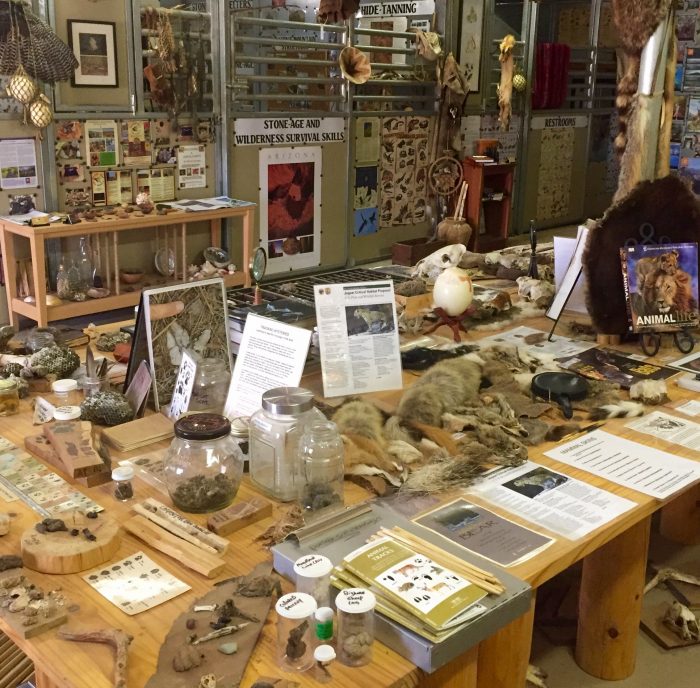

I. WILDERNESS SURVIVAL SKILLS PROGRAM

What would you do if you found yourself lost in the desert? The woods? The mountains? Would you know how to make the things that you need directly from the natural environment? What if you lost some or all of your modern gear or it failed – would you know what to do??
Though countless people find themselves in survival situations each year, few are truly prepared. If you or your family enjoy time in the great outdoors, then you owe it to yourself to empower your mind with the knowledge and practical skills that may someday save lives.

Unlike many survival courses taught today, we focus exclusively on what Nature can provide, not fancy survival kits. Students will learn to value and respect the natural resources around them, as they will discover how useful they can be in a wilderness survival situation. We invite you and your students to be empowered by knowledge, experiencing the old adage – “the more you know, the less you need!”.
 At the conclusion of their RWWJ Wilderness Survival Program students will be a wealth of life-saving knowledge for their family and friends and receive certificates of achievement in recognition of their accomplishments!
At the conclusion of their RWWJ Wilderness Survival Program students will be a wealth of life-saving knowledge for their family and friends and receive certificates of achievement in recognition of their accomplishments!
 We recommend an in-school pre-trip visit by Vincent who is an expert Wilderness Survival Instructor, Wildlife Biologist, Naturalist, Ethnobotanist, and Astronomer. Meeting your students at their school allows for a relaxed introduction to each other and a chance to view a slide show, highlighting some of the activities in the wild, wilderness survival skills to come, as well as the ecology of the Sky Islands region. The slide show can be custom-made to suit your exact curriculum needs.
We recommend an in-school pre-trip visit by Vincent who is an expert Wilderness Survival Instructor, Wildlife Biologist, Naturalist, Ethnobotanist, and Astronomer. Meeting your students at their school allows for a relaxed introduction to each other and a chance to view a slide show, highlighting some of the activities in the wild, wilderness survival skills to come, as well as the ecology of the Sky Islands region. The slide show can be custom-made to suit your exact curriculum needs.
 Choose from any of our STONE-AGE & WILDERNESS SURVIVAL SKILLS Curriculum, including:
Choose from any of our STONE-AGE & WILDERNESS SURVIVAL SKILLS Curriculum, including:
WILD EDIBLE PLANTS


Exploring among the area’s deserts streams, forests, and grasslands you’ll learn how to find, identify, harvest, process, eat, and store a plethora of wild taste treats. We’ll also look at a hunter-gatherer diet for the area, cover a variety of stone-age cooking techniques, discuss safely using wild edibles, and make several plant-collecting/ processing tools. By the end of the class you’ll count each plant as, literally, a friend for life. 
Note: given the inherent risks in consuming wild plants, students must be a legal adult in order to actually consume them. NO Exceptions! Students of any age can learn about wild edible plants and their role in human ecology.
WILD MEDICINAL PLANTS

Using the diversity of environments at our disposal, we’ll delve into a wide variety of natural, plant-based medicines. During the class we’ll address such ailments as: headaches, stomachaches, sore muscles, infections, bleeding, abrasions, eye infections, sore throat, colds, and more. You’ll also prepare your own herbal salve and wild teas to take home. Learn how Nature heals all!

Given the inherent risks in using wild plants for medicine, students must be a legal adult in order to actually collect and possibly use them. NO Exceptions!

NATURAL SHELTERS

Take away our modern buildings, tents, plastic and other familiar materials and many would be at a loss as to how to shelter themselves from the elements. Yet shelter-building constitutes a crucial wilderness survival skill that can readily save lives.

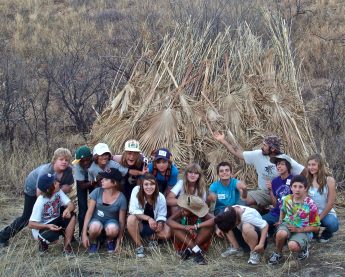



Now you can learn first-hand how to construct, live-in, and maintain both ephemeral and semi-permanent stone-age shelters. Using the examples in our Stone-age Village, your students will learn how to construct: lean-tos, wickiups, shade ramadas, a-frames, and other creative shelters.
With the knowledge that students will gain in the class, they soon will be crafting their own wilderness shelters from earth, stone, plant, and other materials.

STONE-AGE TOOLS

 Further, we’ll guide you in learning how to effectively use each of your creations. See how working hands-on with the bounty of the Earth inspires your students and gets their creative juices flowing!
Further, we’ll guide you in learning how to effectively use each of your creations. See how working hands-on with the bounty of the Earth inspires your students and gets their creative juices flowing!


FIRE-BY-FRICTION



SENSORY AWARENESS

Sensory awareness is the ultimate foundation for all other outdoor skills and knowledge. At RWWJ we’ll introduce the students to a new world – one where brilliant colors and dances of shadow and light grace each moment.

We require that students leave all electronic gadgets at home and arrive to Raven’s Nest Nature Sanctuary ready to experience the magic and wonders of the Natural world. Textures draw you near to touch and experience, while rich tastes and delicate aromas prove equally alluring. The symphony of Nature accompanies these sensations, as students relearn the art of sensory awareness. Through a series of outdoor exercises and experiences students will once again feel “sensible”, leaving behind at least for a short while all the technology they have become so dependent upon!



THE ART & SCIENCE OF TRACKING


 Donʼt miss this powerful opportunity, as we teach your students how to find, identify, age, and interpret a wide range of wildlife tracks and signs. While the focus of the class will be mammal tracks, weʼll also delve into the tracks and other signs left by birds, reptiles, amphibians, and even invertebrates.
Donʼt miss this powerful opportunity, as we teach your students how to find, identify, age, and interpret a wide range of wildlife tracks and signs. While the focus of the class will be mammal tracks, weʼll also delve into the tracks and other signs left by birds, reptiles, amphibians, and even invertebrates.

ROPE-MAKING

The world is full of various natural fibers and after taking this class your students will know just what to do with them! Cordage finds its way into so many other survival skills, including: shelters, tools, fire-making, basketry, hunting, and more.




Using your own hands, as well as simple stone-age tools students will learn the basics and beyond of cordage-making. Along the way they can also craft a variety of projects that rely heavily on the rope that we’ve created. While you may sometime feel “fit to be tied” in the wilderness, you’ll now learn what it means to be “tied to be fit”, as you rediscover this ancient art!
FLINT-KNAPPING

 Rock saws, knives, scrapers, spoke-shaves, wedges, drills, etchers, arrowheads, and spear-points are some of the projects that we will make via this intricate art. These valuable wilderness survival skills will teach students of all ages not to be dependent upon modern gadgets and to look at the natural resources with newfound respect.
Rock saws, knives, scrapers, spoke-shaves, wedges, drills, etchers, arrowheads, and spear-points are some of the projects that we will make via this intricate art. These valuable wilderness survival skills will teach students of all ages not to be dependent upon modern gadgets and to look at the natural resources with newfound respect.STONE-AGE HUNTING & TRAPPING

During this class we will hearken back to a time when we sought the lives of our animal relations for our daily sustenance. We will approach each tool and hunting weapon with an attitude of reverence and respect, seeking to honor the hunt. Hands, sticks, rocks, traps, snares, and bow/arrow gain new meaning when used properly and crafted directly from Nature. Safety and respect for all of life are always stressed in this class.


Students can also learn the art of transforming your quarry into a plethora of useful items. See how hides, bones, antlers, hooves, and sinew gain new life in a variety of stone-age projects.
Note: Needless to say, absolutely NO animals are ever harmed at our beloved Raven’s Nest Nature Sanctuary as we practice these skills. We simply want to educate the students about the Wilderness Survival Skills successfully employed by all of our ancestors and which could save lives during an emergency survival situation.

II. ETHNOBOTANY PROGRAM

Ethnobotany – the study how people use plants for a wide variety of purposes – is perhaps the oldest field of human study. Anthropological evidence suggests that humans have always had a plant component to their diet and have used tools (many plant-based) since prehistoric times. It is a fascinating field where your students will gain respect and appreciation for the abundant native plant resources in the Sky Islands and the Southwest.

Your students will learn which species can be used for food, shelter, tools, hunting, basketry, fire-making, art, medicine, and many other purposes. In the process of exploring a wealth of useful plant species, they will keep journal records and make a take-home craft or tool involving a native plant.

Ethnobotany is also a vital foundation for becoming a well-rounded Naturalist and wilderness survival practitioner. Students explore the plant world in depth via the curriculum in this fascinating program, covering the many uses that humans have for wild, native Sky Islands Plants.
III. STONE-AGE ART PROGRAM

OSTRICH EGG & GOURD CANTEENS

One of the most challenging aspects of Stone-age & Wilderness Survival Skills is to be able to primitively contain and transport water. Both Ostrich eggs and gourds can be transformed into useful and beautiful vessels that admirably perform this very task. Students will learn how to make each water container safe, create a carrying bag, and adorn their creations with stone-age artwork. Follow in the footsteps of our ancestors in learning these ancient skills!

SOUTHWESTERN BASKETRY
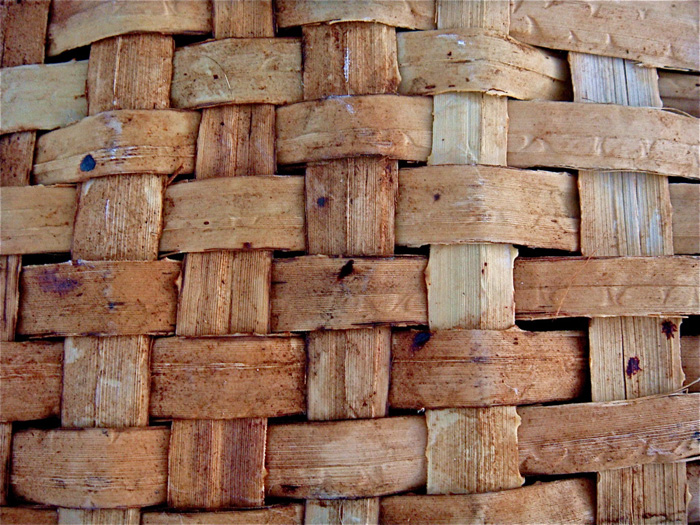

IV. SCIENCE & ECOLOGY PROGRAM
 Given the inherent diversity of the natural world, we strive to reflect that abundance with our wide range of Science & Ecology topics. You can choose from the following classes:
Given the inherent diversity of the natural world, we strive to reflect that abundance with our wide range of Science & Ecology topics. You can choose from the following classes:
SOUTHWESTERN ECOLOGY

Explore any environment in the Southwest with us – from Deserts up to Spruce-Fir forests in quest of both fun and knowledge. We will guide your students as they investigate the beautiful details of the environment, learning about the vital components and natural resources that make it work. We will cover: food chains, ecosystems, natural cycles (water, nutrients…), predator-prey relationships, symbiotic relationships, plant succession, endangered species, human-ecosystem interactions, environmental challenges/solutions, historical perspectives, and much more. Our interdisciplinary approach allows students to see the interconnectedness inherent in the Earth’s natural systems and cycles, as well as the need to conserve all of our scarce resources.
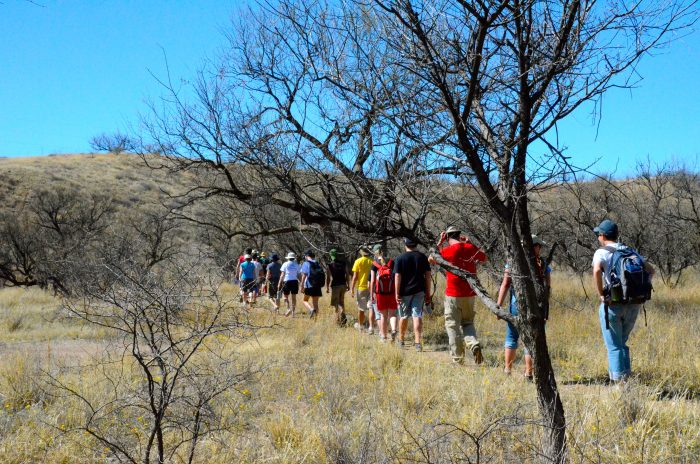
We focus on the environment via hands-on activities, age-appropriate games, and through a variety of hands-on scientific studies. Imagine your students in a real environment, learning not from a book but from butterflies, cacti, trees, the Sun, rocks, and countless other natural features. We guarantee that they will never look at Nature the same way again!

Our basic premise in this and other Science & Ecology classes is that through exploration we begin to experience Nature, which in turn helps us to understand it. This then compels us to love and, finally, protect it. Now more than ever we need to embrace this philosophy of understanding, marveling at, and protecting the Earth.
POND ECOLOGY

Applying many of the same concepts covered under our “Southwestern Ecology” class, we here venture into the aquatic realm. Water, especially clean water, is such a scarce and vital resource to not only humans but to most life found in the Southwest. Your students will explore the plant and animal life of a small wildlife pond at Raven’s Nest or nearby, using dip nets and other equipment to collect their own scientific samples. Some of their finds may be used to restock our aquarium, allowing us a closer look into this watery world. Additionally, we’ll delve into the many threats to our local ponds, lakes, streams, and rivers, noting what each of us can do to conserve our scarce and precious water.
ORNITHOLOGY (BIRDS)

The Southwestern U.S. is famous for its diversity of bird species within a relatively small area. Many naturalists and conservationists, including Vincent, can trace their initial interest in Nature to birdwatching. It is only logical then to have a special class devoted to our feathered friends. Using binoculars, field guides, scientific surveys, and our own senses, we’ll seek out the beauty and environmental teachings that birds have to offer us. Birds often serve as environmental barometers, alerting us to small and large changes in their local environments, such as pollution, global warming, invasive species, and more. Each student will begin their “life list” of bird species (using the list they receive for Raven’s Nest Nature Sanctuary) which will serve as a reminder of their personal interactions with these fascinating creatures.
MAMMALOGY (MAMMALS)

The study of mammals is an integral part of any science curriculum and a fascinating window into Nature. Using skulls, hides, field guides, tracks, journals, photography, and other tools we will explore the realm of the Coyote, Whitetail Deer, Grey Fox, Pocket Mice, Gophers, Bobcat, Collared Peccary (Javelina), and other local mammals. We can also live-trap smaller mammalian species, studying them in our terrariums prior to releasing them back into the wild. In the process your students will discover the unique role of each species and how they relate to humans, including various conservation issues.
HERPETOLOGY (REPTILES & AMPHIBIANS)

What is true of mammals and birds in the Southwest is also true of reptiles and amphibians – namely, we are blessed with a diversity of incredible species that are worthy of our detailed explorations. Starting with safety (i.e. venomous species) and progressing thru scientific study and appreciation, your students will marvel at the adaptations of each species examined. We will set up simple, but effective, live traps seeking to discover the presence of local species. Field guides and our captive native reptiles will also aid in identification and understanding of these often misunderstood species.
BOTANY (PLANTS)

The study of plants, botany, is a fun and necessary foundation for understanding Nature as a whole. Unlike animals the movements of plants are minimal, rendering them admirable research subjects. Thus, clad with botany journals, hand lenses, plant presses, field guides, and other tools we will delve into the sylvan world of plants. Students will document the presence and abundance of a variety of plants, learn about plant conservation, and help to remove non-native (invasive) plants from a study area. Each student will receive our local plant list as a reminder of the diversity and beauty of our plant relatives.
GEOLOGY

The study of the Earth and its myriad of seen and unseen forces is indeed a humbling enterprise. The scale and magnitude of changes to both the forms and physical environments of the Earth over the course of its existence are profound. Thus, instead of mere words, we will use a field trip to the land itself to demonstrate some basic concepts of geology, such as erosion, earthquakes, deposition, igneous/metamorphic/sedimentary rocks, hardness scale, mountains and valleys, human-induced landform changes (e.g. excessive erosion due to overgrazing and urbanization) and more. Along the way we will visit some of the extinct animals and plants that used to inhabit Arizona and seek to understand the geologic history and possible future of our region.
V. THORNS, STINGERS, & FANGS!

Black Widows, Rattlesnakes, Poison Ivy, spiny cacti, Centipedes, Kissing bugs, Africanized Bees, Ants, Gila Monsters, Scorpions and more – welcome to the Southwest! How in the world can we enjoy the wilds with these species as neighbors? In this class your students learn to tell the difference between truly dangerous animals and plants versus those that we unjustly fear. Further, we’ll delve deeply into the identification, natural history, and first aid involved with each species covered. Not only will students increase their knowledge and safety with each species, they may also discover that they’ve made a few unconventional friends along the way – giving them a wide berth at times!
VI. AMAZING ARIZONA ASTRONOMY
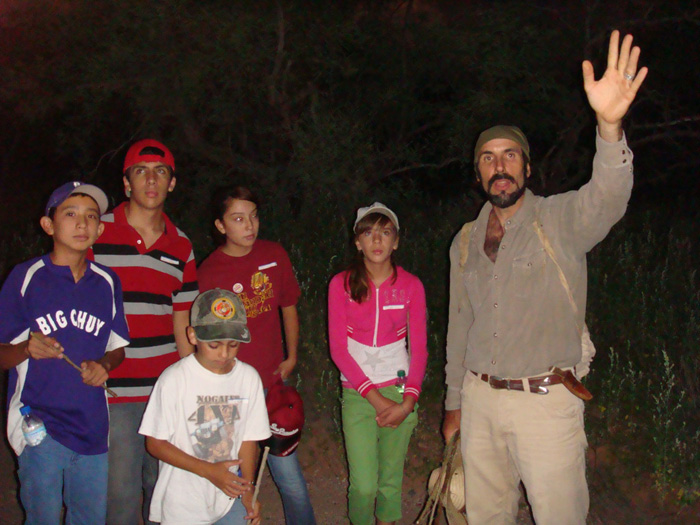
The night skies of Southeastern AZ include some of the best celestial viewing sites in North America. Year-round you can explore the mystery of the night skies, including:
- A constellation tour
- Planetary views
- Mysterious Deep Sky Objects
- Seasonal Meteor Showers
- Star and planetary lore and mythology


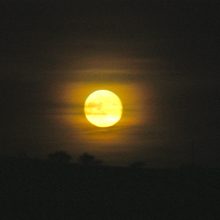
With the aid of cutting edge technology, as well as the ancient sky stories, students will rediscover the joy of gazing at the night sky. [note: this class can be combined with a dusk Wildlife Safari or Night Walk if you desire]
VII. EARTH STEWARDSHIP PROGRAMS







TEAM BUILDING, PROBLEM SOLVING & LEADERSHIP SKILLS!


All the Stone-age and Wilderness Survival Skills are opportunities for team growth and for developing and strengthening leadership skills. At RWWJ we constantly highlight how past cultures relied on team work in their communities to accomplish all of the daily tasks that allowed them to thrive! It has been very rewarding for us at RWWJ to witness how the group dynamics improve for all the groups that we host at our Stone-Age Village.
OUR STONE-AGE VILLAGE

Many of our Wilderness Survival Skills, Ethnobotany, and other programs will take place at our unique Stone-age Village. Here we’ve strived to provide a realist example of a small hunter-gatherer encampment. The shelters, tools, and other features of the village provide wonderful examples of various wilderness survival skills, thus serving as an outdoor, living museum. Some feature of our Stone-age Village include:
Thus far, the village includes:
- Flint-knapping Area/Ramada
- Large Lean-to shelters
- Earth-oven & Pottery firing pit
- Group Shade Ramada
- Food-processing Area
- Grass-covered Wickiup,
- Several Conical Wickiups
- A-frame Shelter
- Reed Shade Shelter
- Arroyo Shelter
- Hunting and Trapping site
- Story-telling Area
- Recreational Hearths
- Domed Wickiup
- Fire-making area
- Hide-tanning area
- Hunting and Trapping area




Join us at Raven’s Nest Nature Sanctuary to learn how to make fire without matches, rope from local plants, tools from rocks, shelters from natural materials, natural paint from rocks, and much more at our unique stone-age village!
We invite interested teachers, administrators, and parents to tour not only the Stone-age Village, but all of our excellent facilities when planning programs with us!



RAVENS-WAY WILD JOURNEYS HAS BEEN FEATURED IN:
- Patagonia Regional Times – August/September 2019 Read Article
- Nogales International – September 1, 2017 Read Article
- Green Valley News – September 18, 2017 Read Article
- The Vermillion Flycatcher – Tucson Audubon Society Read Article



